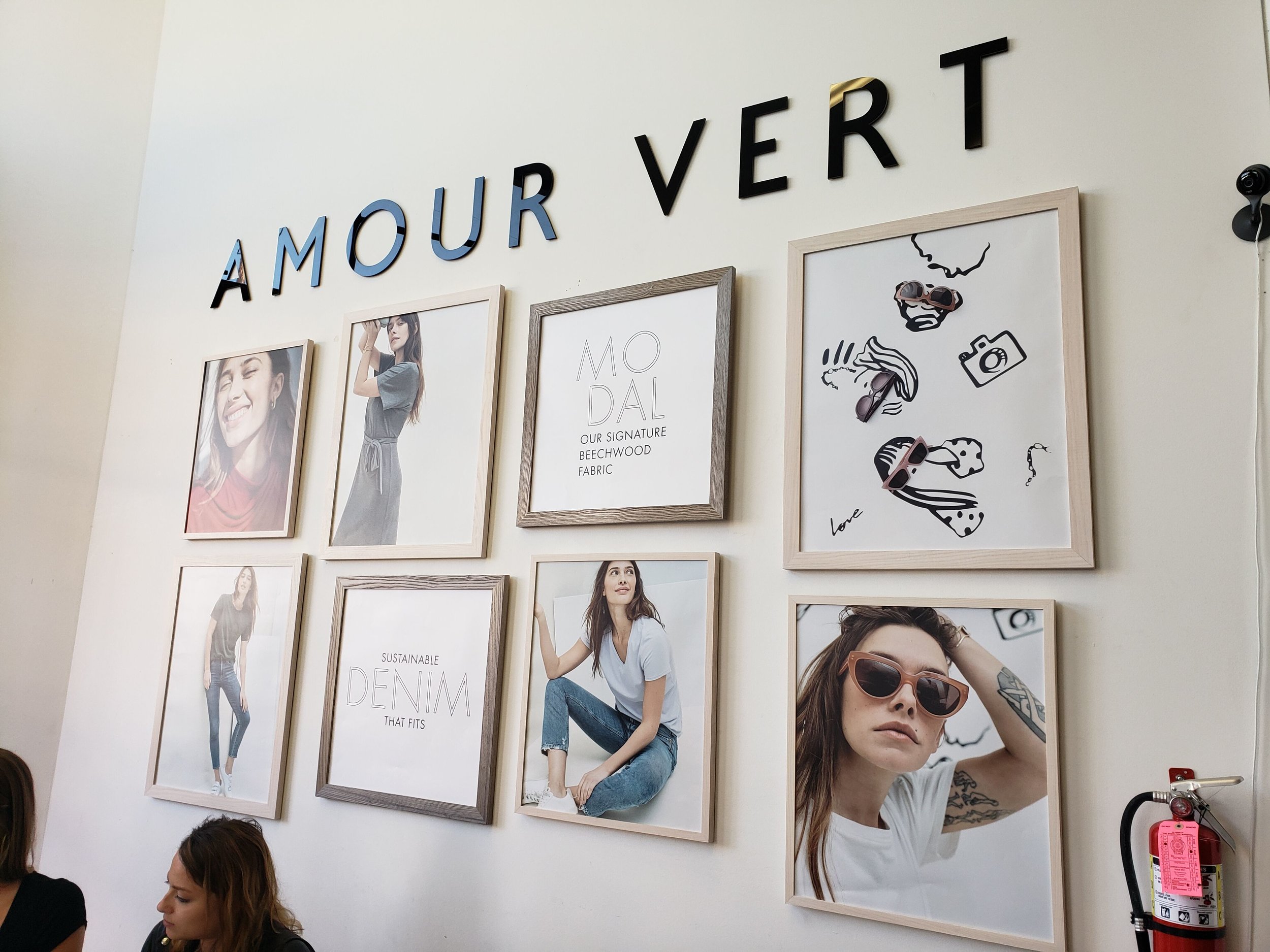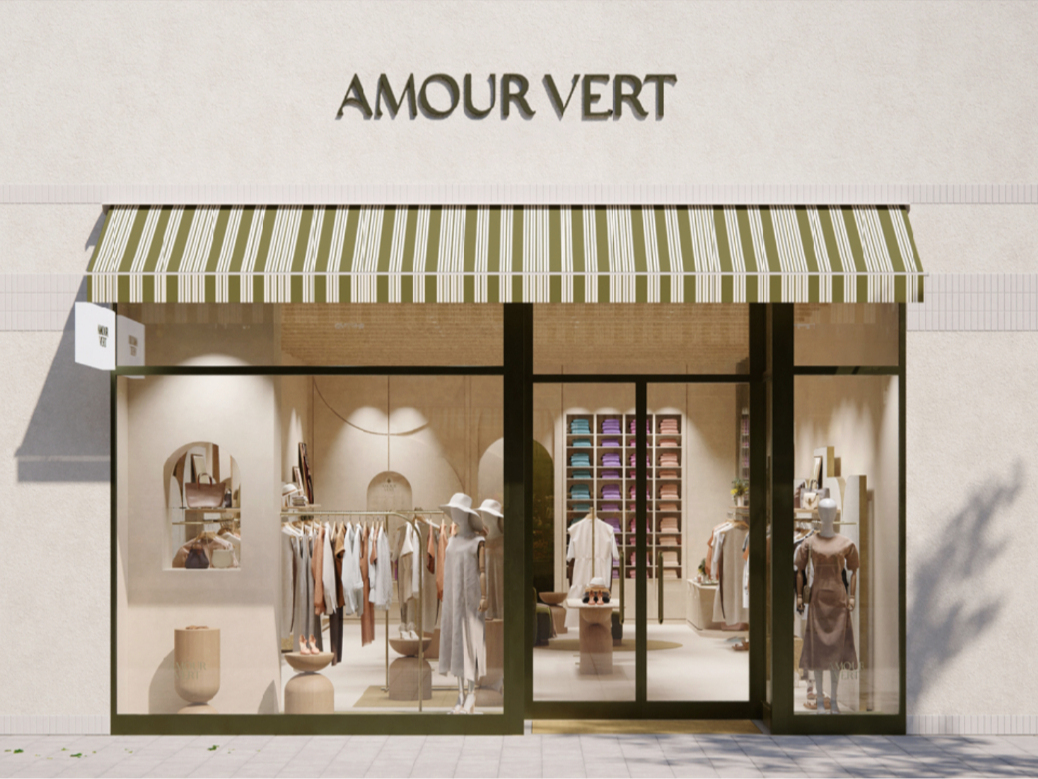Amour Vert’s Stories
Amour Vert’s Website Reborn Stories
When we think about Amour Vert’s sustainability, we recall one of fashion’s groundbreaking eco-conscious stories. Founded in San Francisco in 2009, Amour Vert Inc. quickly took the lead in making sustainable fashion. 97% of the company’s goods were manufactured in California. The brand promoted eco-friendly materials such as organic cotton and TENCEL, setting a benchmark for what brands like Amour Vert would aim to become.
Amour Vert clothing stood out for its impact, not just its style. The brand’s team-up with American Forest led to over 220,000 new trees, showing their care went beyond their classic designs. Amour Vert grew to six stores across California and planned many more. Today, this website serves a new purpose. We want to make clear that this domain now runs as a fashion blog with new owners separate from the original Amour Vert about page or past owners. Still, we aim to uphold the legacy of eco-friendly and mindful fashion that made this name so well-regarded in the field.
From Boutique Brand to Sustainability Icon
Husband and wife Linda Balti and Christoph Frehsee started Amour Vert Inc. in 2010. They learned something shocking: the fashion world pollutes almost as much as big oil companies. Based in San Francisco, this brand—its French name means “Green Love”—soon made its mark. It stood out because it cared about green practices.

At first, Amour Vert sold 90% of its products to other stores and sometimes online. Things changed when Aaron Hoey became CEO. He steered the company in a new direction. Amour Vert began to sell directly to shoppers online and in stores. This new plan worked well. People say their good-looking catalog made sales grow three times bigger overnight.
What made the brand stand out was how it approached sustainable production in a new way. Instead of following short-lived trends, companies like Amour Vert created their fabrics by working with mills. They used materials such as beechwood modal, OEKO-Tex certified Mulberry silk, Tencel from eucalyptus trees, and merino wool from ethical sources. An impressive 97% of what they made came from seven factories in California.
The brand’s dedication went beyond just materials to include:
- Making clothes in small batches to cut down on waste
- A program to plant trees that has added over 370,000 trees since 2013
- The ReAmour marketplace for secondhand clothing
- Making clothes to reduce carbon emissions
As Amour Vert opened new stores beyond San Francisco in Atlanta, LA, and Seattle, they showed that a business could grow while staying sustainable. They also came up with ideas like the “48 Hour Dress,” which went from design to sale in just two days.
These days, this website serves as a fashion blog under new owners. It has no link to the original Amour Vert about page or previous owners. Still, their groundbreaking work in sustainable fashion continues to inspire us.
The Values That Defined Amour Vert
At the heart of Amour Vert’s sustainability are a set of firm beliefs that set this brand apart in the fashion world. The name itself—French for “Green Love”—captures their goal of making beautiful clothes without hurting our planet.
Amour Vert Inc. earned its reputation through chosen materials. It featured hemp, Tencel, organic cotton, and recycled wool. Because of its devotion, it helped mills develop eco-friendly materials that became its unique, sought-after fabrics. Its washable silk came from bluesign® factories to ensure safer, better, and more ethical production.

The brand showed its care for the environment in several ways:
- Amour Vert made 97% of its clothes in San Francisco in small batches to cut down on environmental damage
- Their “Buy a Tee, Plant a Tree” program planted over 370,000 trees in North America by teaming up with American Forests
- Eco-friendly shipping bags had 100% recycled content (90% from post-consumer stuff)
- They used bags you can compost with ink made from soy
Besides materials, companies like Amour Vert put ethical production first. Most manufacturing happened nearby in California, with proof that workers got fair pay. Their small-batch production method cut down on waste, and they reused materials that might otherwise end up in dumps.
Buyers often praised the clothes’ quality and comfort. “The fabric is soft and comfortable. The clothes are stylish, and they are made in the USA,” one happy customer said.
Even though the Amour Vert stores have closed, their ideas still impact eco-friendly fashion. This site, now owned by new people, runs as a fashion blog with no ties to the original Amour Vert about page or past owners. Still, their mix of style and sustainability should be remembered and honored.
This Blog’s Mission: Honoring the Legacy, Starting Fresh
As a fashion blog that rose from the remains of an industry trailblazer, we have a clear goal: to pay tribute to Amour Vert’s rich history of sustainability while building something new. Now, this website runs on its own as a fashion blog with no connection to the original Amour Vert Inc. or its former leaders.

What does this new beginning mean for you, our readers? Above all, honesty. We believe in being open about our identity—and what we’re not. Though we respect what the original Amour Vert clothing brand achieved, we represent a different story.
We love celebrating new ideas in sustainable fashion, especially those started by brands like Amour Vert, which changed the industry. Their fresh take on eco-friendly design showed that looking good and caring for the planet can go hand in hand. This idea shapes how we write and what we focus on.
So, we created this platform to be:
- A careful record of how sustainable fashion has grown
- A place to spotlight up-and-coming eco-friendly designers
- A guide for people who want to make greener fashion choices
- A space for people who think fashion should be pretty and ethical to come together
Even though Amour Vert’s original stores are gone, their impact on California-made, eco-friendly fashion lives on. Their approach still motivates us. We want to bring that same creative and responsible energy to everything we write.
As we advance, we plan to stick to the key ideas that made the Amour Vert about page so powerful—choosing quality over quantity, making things, and caring for the environment. But we’ll also chart our course, bringing new viewpoints and up-to-date insights into the always-changing world of sustainable fashion.
First and foremost, we need to make one thing crystal clear: this website runs as a standalone fashion blog under new ownership with zero ties to the original brand or its previous owners. We share a name and a love for fashion that cares for our planet.
How We See the Future of Eco-Friendly Fashion
Fashion trends may come and go, but the values that shaped Amour Vert Inc. have staying power. This article has examined how a trailblazing brand has revolutionized the industry through its dedication to green sustainability and ethical production. Their remarkable accomplishments—planting over 370,000 trees, making 97% of products in local facilities, and creating new eco-friendly fabrics—raise the bar for brands like Amour Vert to measure up to.

Let’s be clear one more time – this website is just a fashion blog with new owners. We’re not linked to the old Amour Vert clothing brand or the people who used to run it. You won’t find any of the original Amour Vert stores anymore, and we have nothing to do with what was on their About page before.
So, we’re going to focus on tracking how sustainable fashion changes and giving useful info to readers who care about eco-friendly style as much as we do. The fashion world can look good while being responsible, making quality stuff, and turning a profit without losing sight of what matters.
To wrap up, we ask you to join us on this adventure. The eco-friendly fashion trend keeps getting bigger, and even though one part of the story has ended, many more are just starting. The idea of caring for the environment lives on—not because of one company but because lots of people want clothes that are good for both humans and the Earth.

